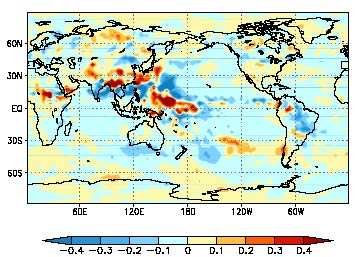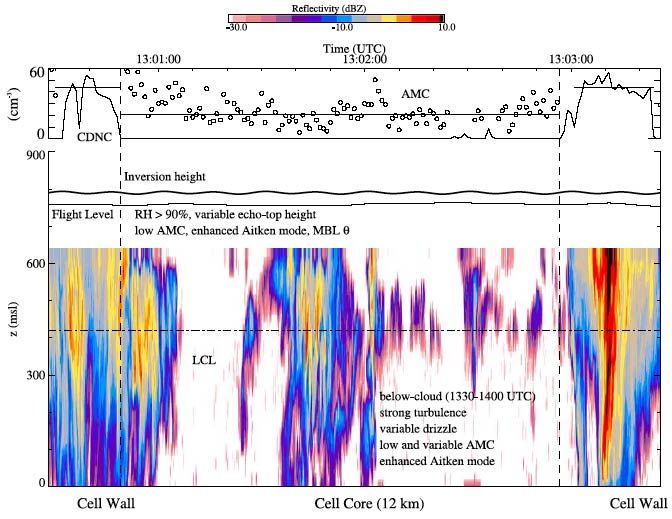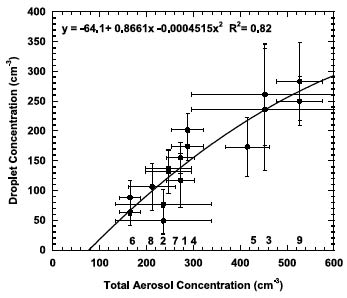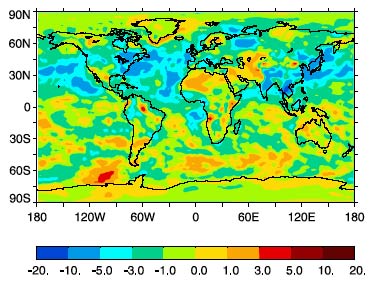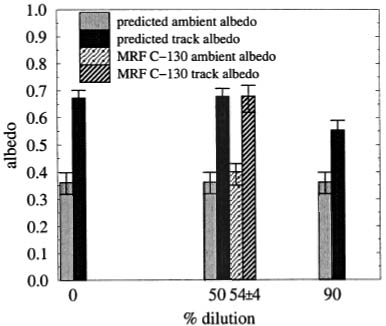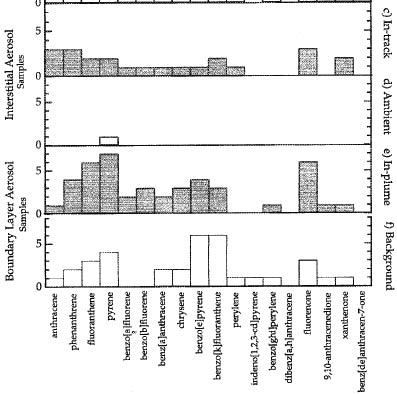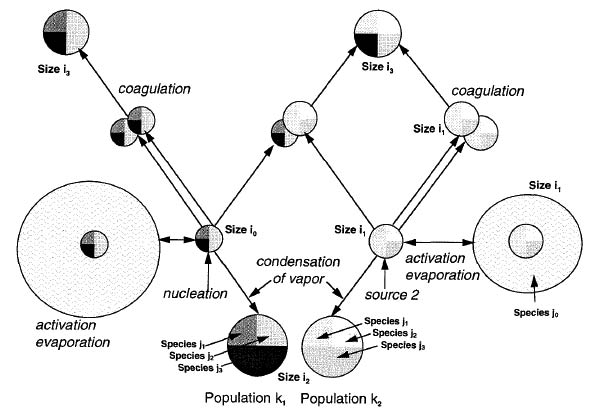|
||
Aerosol-Cloud Microphysical InteractionsThe interactions between aerosol particles and cloud drops is critical to identifying how much they reflect solar radiation. The indirect effect of aerosols may include, less rainfall due to higher concentrations of droplets and smaller droplet radii, and also increased reflectivity and lifetime of clouds. This has been primarily attributed to the effect of anthropogenic aerosol emissions on the number of cloud condensation of cloud nuclei (CCN), with a resulting impact on cloud droplet number concentration (CDNC), sizes, and cloud optical properties (albedo). Aerosol dynamics and aerosol-cloud interactions include condensation, coagulation, aerosol thermodynamics, cloud droplet activation, and removal processes within clouds. Ship tracks in Monterey and the study of the stratocumulus-topped boundary layer (STBL) by DYCOMS-II have proven to be excellent case studies for examining these processes and their impact on Earth's radiative balance. Peer-reviewed publications on this topic:
In this study the effect of solar absorption in clouds on climate in response to absorbing aerosols is explored to focus on the regional changes during the northern summer season. On a global scale that a reduction in low-cloud single-scattering albedo causes a warming of the surface, stabilization of the lower troposphere, and a reduction in the hydrological cycle, although the responses such as with shortwave flux at the surface and the hydrological cycle vary distinctively from region to region. An aircraft-based study of a subtropical Pacific marine boundary layer identified the presence of pockets of open cells from regions where cloud radar echo tops were unusually variable. The pockets were found to have low accumulation mode concentrations and high Aitken mode particle concentrations, possibly due to an ongoing nucleation event. This aerosol study over the northeastern Pacific analyzed nine stratocumulus clouds to find a strong relationship between below-cloud aerosol particle concentration and droplet microphysical properties. No relationship was found between aerosol particle concentration and either calculated cloud optical thickness or albedo though, possibly due to varying liquid water content and cloud thickness from large dynamical influences. An atmospheric general circulation model (GCM) with a new cloud scheme is used to relate cloud droplet number concentrations to sulfate mass concentrations. A distinction is also made between forcing and flux change at TOA to examine the first indirect effect (Twomey Effect) and the second indirect effect (involving response to the climate variables). The total effect is comparable to other studies. An airborne field study designated DYCOMS-II over the northeastern Pacific used a large suite of instrumentation to study the stratocumulus-topped boundary layer (STBL). The highly variable DMS tracer was measured to understand entrainment rates and processes, and drizzle was found to be a key element of the dynamics of the STBL. To further understand the effects of aerosol size and composition on the radiative properties of clouds, this investigation utilizes the mixed aerosol microphysical model and a delta-Eddington exponential-sum-fit radiation algorithm to find that ship track plumes in a clean marine stratocumulus increase the albedo, decrease the transmission of the clouds, and enhance atmospheric absorption substantially. An aircraft-based study of polycyclic aromatic hydrocarbons (PAHs) in marine stratiform clouds established differences in the composition of plume and background aerosol in and around ship tracks. Measurements of interstitial aerosol showed partitioning of organic compounds to the droplet population. This study proposes a new model to calculate the evolution of externally mixed populations of internally mixed aerosol particles while accounting for the processes of nucleation, condensation, coagulation, and deposition. The model is applied to sea-salt and sulfate particles to identify their size and composition before and after cloud processing in the marine boundary layer. |

|
|

